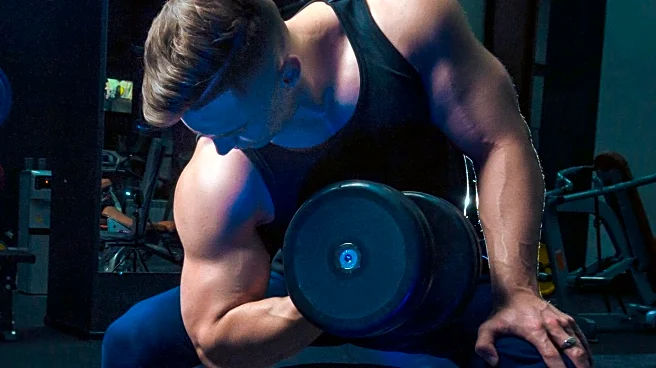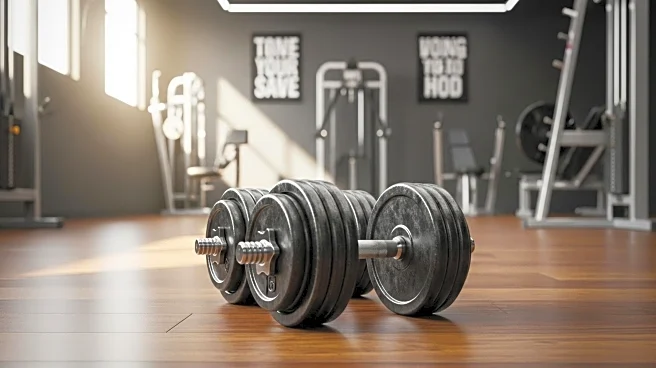What's Happening?
Bodybuilders are increasingly adopting a 'clean bulking' approach, moving away from traditional 'dirty bulking' methods that involve consuming excessive calories from processed foods. This shift is driven
by a growing awareness of the health impacts of processed foods and a desire for sustainable muscle growth. Clean bulking involves consuming slightly more calories than needed for maintenance, sourced from healthier foods like cottage cheese, eggs, sweet potatoes, and almonds. This method is gaining popularity among both professional bodybuilders and amateurs, as it aligns with broader cultural trends favoring natural and minimally processed foods.
Why It's Important?
The transition to clean bulking reflects broader shifts in American culture towards healthier eating habits and body image standards. This approach not only supports muscle growth but also mitigates the negative health effects associated with excessive consumption of processed foods, such as insulin resistance and cardiovascular issues. As clean bulking becomes more mainstream, it could influence dietary practices beyond the bodybuilding community, promoting healthier eating habits across society. However, the focus on aesthetics over health remains a concern, as extreme dieting can lead to nutritional deficiencies and eating disorders.
What's Next?
As clean bulking gains traction, it may lead to increased scrutiny of dietary practices within the bodybuilding community, potentially prompting more research into sustainable muscle growth methods. Health professionals may advocate for balanced approaches that prioritize overall well-being over aesthetic goals. Additionally, the trend could influence public health campaigns and policies aimed at reducing the consumption of processed foods and promoting healthier lifestyles.
Beyond the Headlines
The rise of clean bulking highlights the intersection of wellness culture and traditional bodybuilding practices, raising questions about the societal pressures to achieve certain body standards. It underscores the need for a balanced approach to fitness that considers both physical health and mental well-being. The trend also reflects changing perceptions of masculinity and body image, as more men engage in discussions about health and aesthetics.











